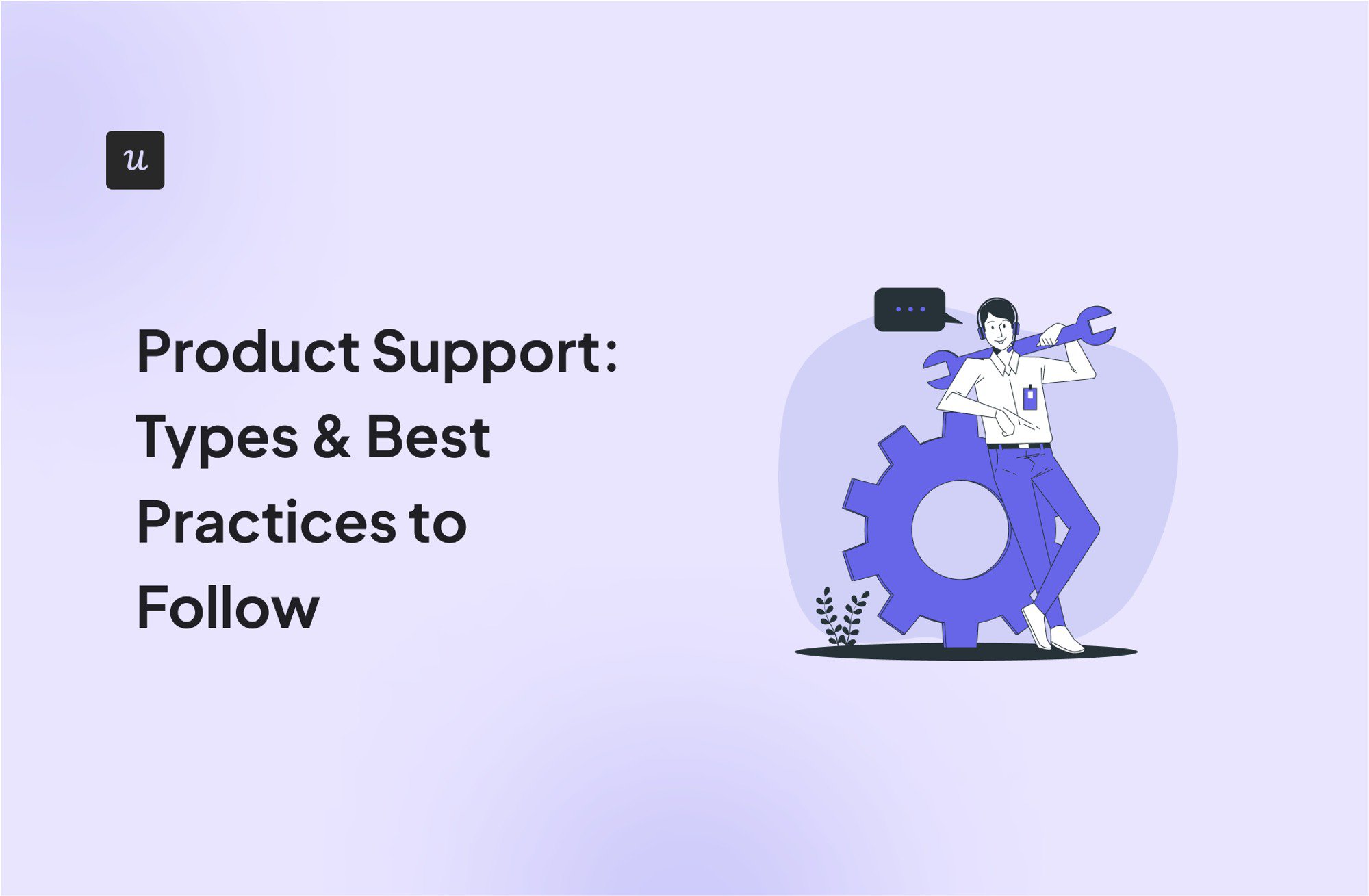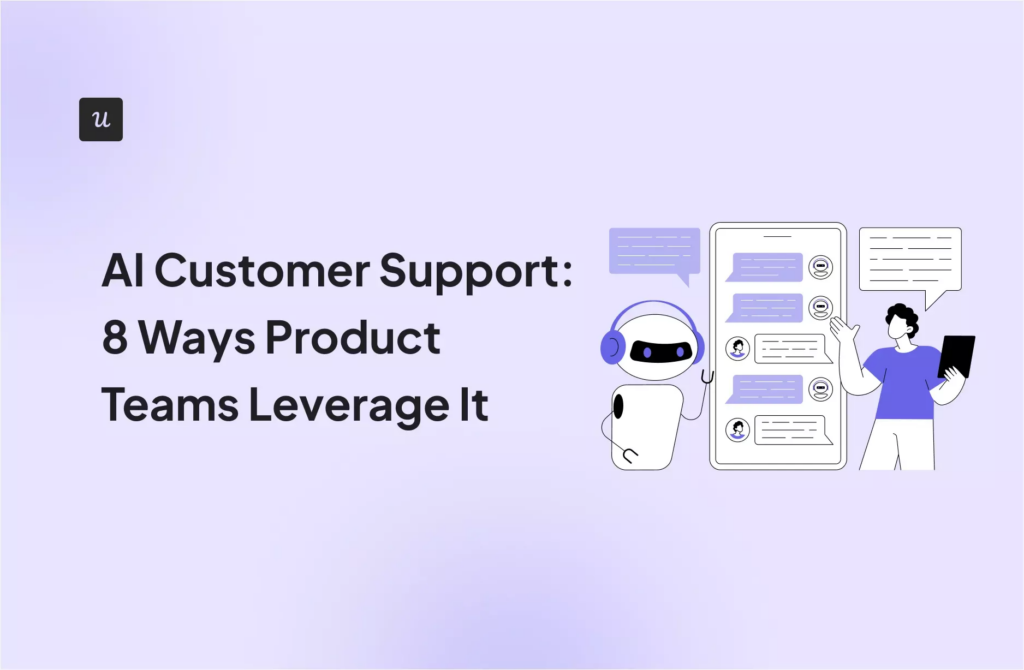
Did you know that our client RecruitNow saved over 1,000 customer training hours a year by implementing a localized resource center coupled with onboarding flows?
Great product support helps you cut costs and make users happy, so in this article, we’ll look at the various in-app support types and some best practices for you to follow.
Try Userpilot Now
See Why 1,000+ Teams Choose Userpilot

What is product support?
Product support is a service that assists customers in using a product effectively and resolving any issues they may encounter. This can include troubleshooting, answering questions, providing updates, and guiding customers through the full range of features and functionalities.
Product support types you should implement to exceed customer expectations
Here are several product support types you should implement into your product.
Self-service support
Self-service support allows customers to find answers and access solutions independently without contacting a support team. It is convenient for users and reduces the workload on companies’ customer service teams. Here are some key examples:
- Knowledge base: A centralized online library that provides detailed articles, FAQs, and guides to help users troubleshoot issues and understand how to use the product effectively.
- Resource center: A collection of helpful resources, such as articles, videos, and product updates, accessible within the product. Resource centers provide users with relevant information and support without leaving the product environment.
- In-app video tutorials: Short instructional videos embedded directly in the app guide users through specific tasks or features. These tutorials offer an engaging way to learn, helping users quickly grasp functionalities and reducing the need for additional support.

Assisted support
Assisted support involves direct interaction between customers and support representatives to resolve issues that can’t be addressed through simple self-service options. This personalized approach helps companies build stronger customer relationships and provides immediate help. Here are some key examples:
- Live chat: Real-time messaging allows customers to communicate instantly with support agents for quick answers and help. Live chat is highly effective for resolving issues promptly and enhances the user experience by providing immediate support in-app.
- Phone and email: Traditional yet essential methods for providing a personalized experience, allowing customers to discuss their issues. These channels are valuable for addressing complex problems requiring in-depth explanations or a more human touch.
- Social media: Engaging with customers through platforms like Facebook or Instagram offers a more informal and public avenue for customer support. Social media support effectively addresses quick questions and feedback while showing responsiveness to a broader audience.

Proactive support
Proactive support expects customer needs and addresses potential issues before they become problems. This proactive approach to handling them enhances customer satisfaction by showing your commitment to their success. Here are some key examples:
- In-app messaging: Real-time messages delivered within the product interface provide timely tips, updates, or warnings based on user behavior. This method allows you to guide users proactively, offering help or promoting new features when they are most relevant.
- Customer success management: A strategic approach that focuses on helping customers achieve their desired outcomes through your product. Customer success teams can offer personalized advice and support by monitoring customer usage and engagement. This helps to reduce churn and increase customer loyalty.
- Interactive walkthroughs: Step-by-step guides embedded directly in the product help users understand new features or complete tasks without leaving the app. These walkthroughs enhance onboarding and product adoption by providing hands-on, proactive support tailored to the user’s needs.

Product support best practices to efficiently deal with support requests
Here are some best practices you can follow to help reduce your support ticket volume.
Offer multichannel support to meet customers where they are
Offering multichannel support allows you to engage with customers through their preferred communication methods, enhancing their overall experience and satisfaction.
Providing access to multiple support channels ensures accessibility and convenience. This can help reduce response times and improve problem-resolution rates.
Examples of different support channels include email, live chat, social media, and phone support.
Include self-serve options so users can solve problems independently
Self-serve options empower users to find solutions on their own without the need to contact support. By providing a comprehensive knowledge base, resource center, FAQs, and webinars, you enable users to access information and guidance conveniently.
A well-structured knowledge base offers detailed articles and step-by-step guides, while a resource center merges various support materials in one place. FAQs answer common questions quickly, and webinars deliver in-depth tutorials and feature overviews.
The benefits of this type of proactive help are twofold. It allows users to resolve issues on their terms without waiting for help, and it reduces the overall support volume. This enables the customer support team to focus on more complex requests that require personalized attention.

Segment customers and provide contextual help based on their behavior
Segmenting customers based on feedback responses and usage behavior allows you to offer more relevant and timely help tailored to their needs and expectations. This approach delivers contextual help that aligns with where a user is on their journey, ensuring a more personalized and effective support experience.
For example, if a user frequently accesses a particular feature but reports difficulties in understanding it through feedback, you can trigger in-app tooltips or guides specifically for that feature to help them navigate it better.

Train your support staff well to improve customer experience
Regularly training your support team on product knowledge, communication skills, and problem-solving techniques is crucial for enhancing the quality of customer interactions. Well-trained staff, such as product specialists, are better equipped to understand unique challenges and provide accurate information, which helps resolve complicated customer issues more effectively.
Focusing on clear communication and effective problem-solving skills ensures customers receive helpful and empathetic responses, contributing to a positive customer experience.
Additionally, promoting consistency in responses is key to building trust and reliability. By standardizing support procedures and ensuring that all team members are aligned on handling various scenarios, you create a seamless and predictable customer support experience, making life easy when you need to scale.
Gather feedback on your product support
Continuously improving your support services is essential, and one of the best ways to achieve this is by soliciting customer feedback after their interactions. Gathering product feedback through customer service surveys helps identify areas where your support team is excelling and where gaps may need addressing.
This critical ongoing feedback loop allows you to make data-driven improvements to your support processes, ensuring you meet customer expectations and maintain high satisfaction levels.
To gain valuable insights, consider asking simple questions such as:
- “How satisfied were you with the resolution provided by our support team?”
- “Was the response time for your support request acceptable?”
- “How clear and helpful was the information provided by our support agent?”
- “What can we do to improve our product support experience?”

Monitor key product support metrics and improve performance
Tracking key product support metrics is crucial for assessing the effectiveness of your support services and identifying areas for improvement. By monitoring these critical metrics, you can make data-driven decisions to enhance customer satisfaction scores, streamline support processes, and allocate resources more effectively.
Consistently analyzing these metrics helps you pinpoint inefficiencies and implement strategies designed to optimize your support team’s performance.
Here are some important product support metrics to measure:
- Ticket volume: Measures the number of support tickets received over a specific period, showing the overall demand for support and potential areas where users might struggle.
- Ticket backlog: This represents the number of unresolved support tickets, highlighting the support team’s capacity to handle current workloads and the need for process adjustments if backlogs are high.
- Average response time: Tracks the average time it takes for a support agent to respond to a customer’s initial request, impacting customer satisfaction and the perceived efficiency of the support team.
- Average resolution time: Measures the average time taken to fully resolve a customer’s issue from the initial contact, reflecting the effectiveness of the support process in addressing user concerns.
- First contact resolution rate: The percentage of support tickets resolved in the first interaction shows how effectively the support team can address issues without needing follow-ups, enhancing customer satisfaction.
Conclusion
There are plenty of types of product support you can offer your customers to ensure that they get the support they need so they feel valued and get the greatest product experience.
Userpilot is the perfect tool to help with creating in-app support experiences without coding. Book a demo now to learn exactly how Userpilot can help your company.








